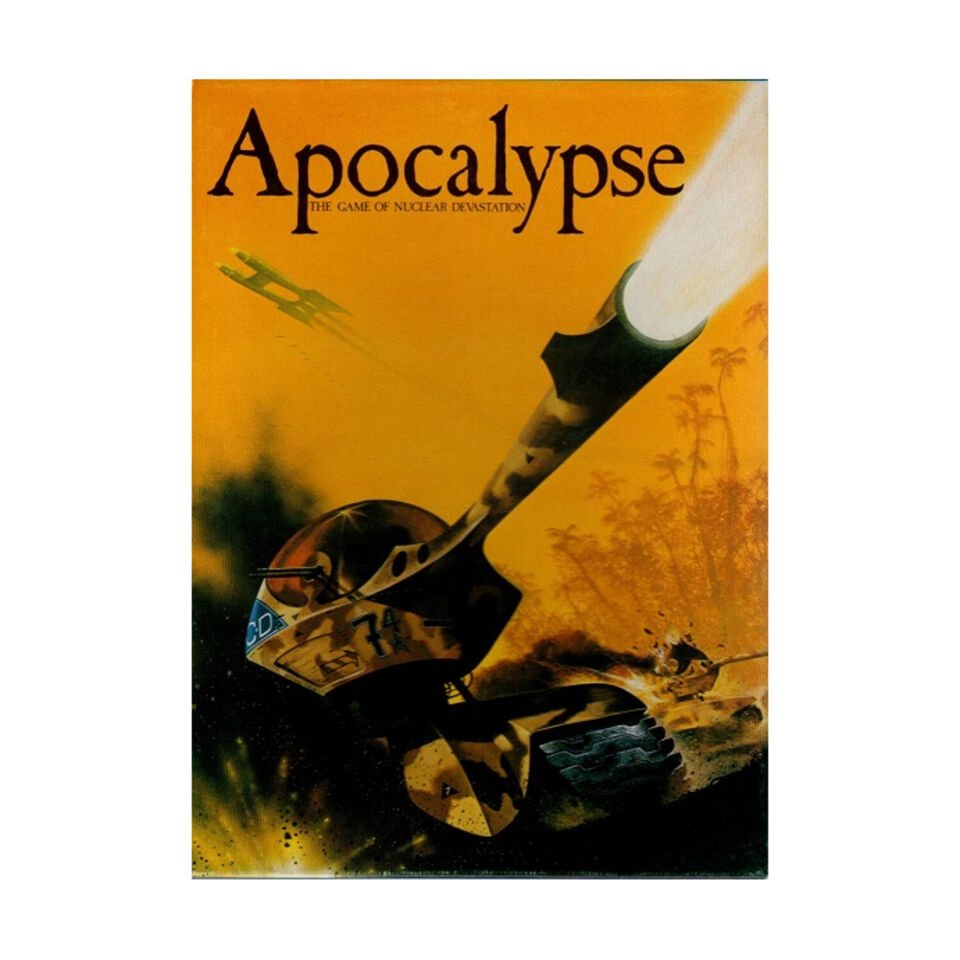Arab Israeli Wars (2006)
Apocalypse: The Game of Nuclear Devastation
Apocalypse: The Game of Nuclear Devastation is a board game of nuclear war released by Games Workshop in 1980. It is based on The Warlord, a game designed and self-published by Mike Hayes in 1974. The game map covers Western Europe, and players vie to conquer the entire map, the last one standing being declared the winner. The game is a game of conquest for 2–4 players similar to Risk, albeit with nuclear weapons.In 1980, Games Workshop acquired the rights from Hayes and revised the game, simplifying the rules, reducing the number of players to 4, removing hydrogen bombs, allowing irradiated areas to be cleaned up, and cutting the board map in half (eliminating Eastern Europe). This revised game was released as Apocalypse: The Game of Nuclear Devastation with cover art by Tony Roberts.
Why is Apocalypse: The Game of Nuclear Devastation Popular?
Apocalypse: The Game of Nuclear Devastation is significant because it is one of the earliest board games to simulate nuclear war. It was released during the height of the Cold War, and its popularity reflects the anxieties of the time. The game is also notable for its unique Gameplay Mechanics of Apocalypse: The Game of Nuclear Devastation, which incorporate both conventional and nuclear warfare.
Game Components of Arab Israeli Wars
How To Setup Arab Israeli Wars
Setting up the game involves preparing the maps, distributing the counters, and selecting a scenario. Players must read through the scenario instructions to understand the specific setup requirements, including the deployment of units and any special rules. The game’s components are designed to be modular, allowing players to mix and match maps and scenarios to create different battles.
Gameplay Mechanics and Game Objective
Player Experience
Playing **The Arab-Israeli Wars** can be an engaging and challenging experience. The game introduces players to the complexities of modern tank warfare and the strategic considerations of the Arab-Israeli conflicts. The scenarios are presented in increasing order of complexity, making it accessible for new players while still offering depth for veterans.
Pros
Cons
Personal Thoughts on Arab Israeli Wars
**The Arab-Israeli Wars** is ideal for fans of tactical wargames and those interested in the military history of the Middle East. While it may not offer the most advanced or realistic simulation by today’s standards, it remains a fun and educational game that provides many hours of engaging gameplay. It is particularly suited for players who enjoy learning about historical conflicts through interactive scenarios. However, players seeking more modern and innovative game mechanics might find it less appealing.
We are supported by our audience. When you purchase through links on our site, we may earn an affiliate commission, at no extra cost for you. Learn more.

